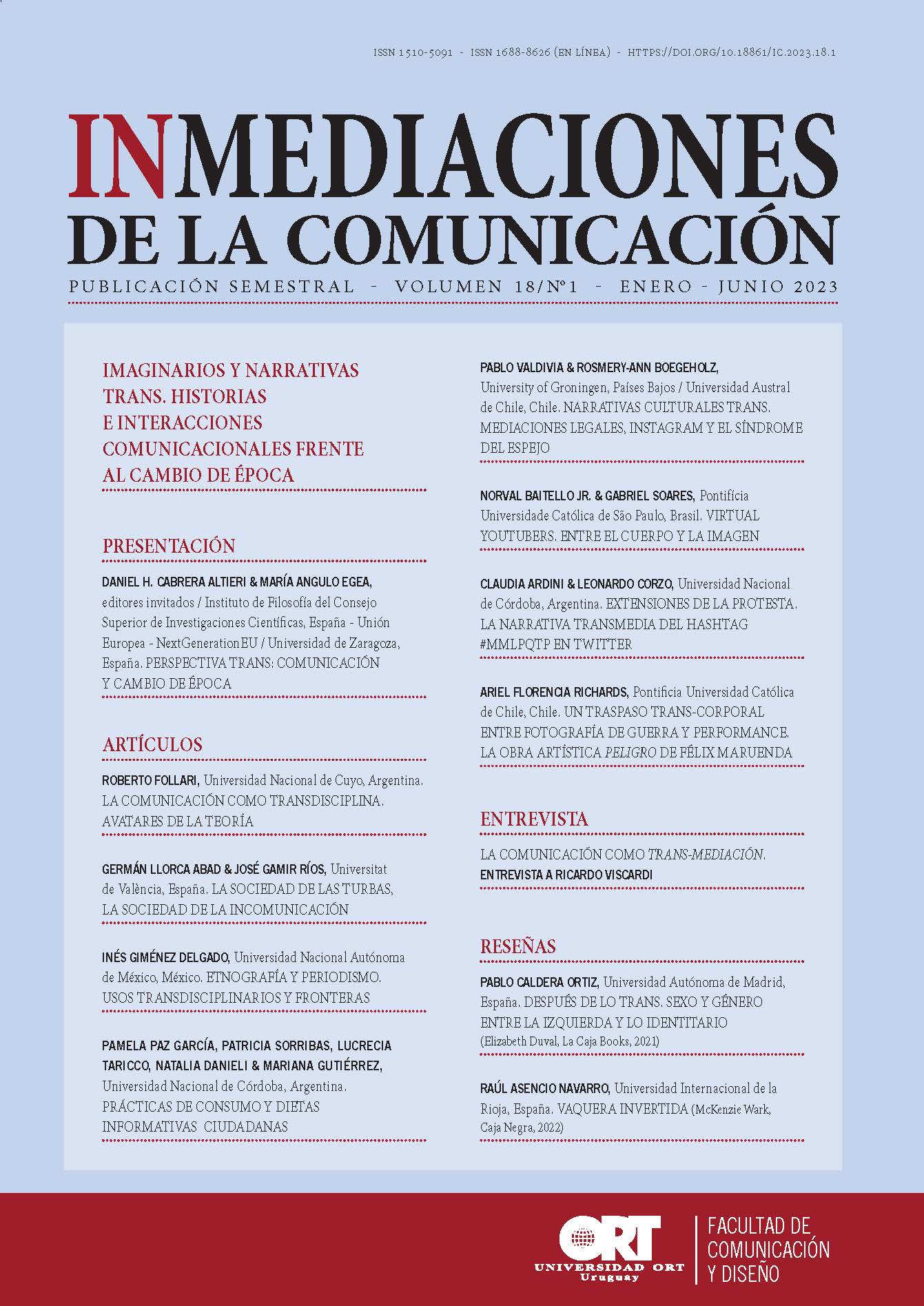Virtual Youtubers
Between body and image
DOI:
https://doi.org/10.18861/ic.2023.18.1.3341Keywords:
Virtual Youtuber, Streaming, Artificialization of the humans, Trick, IconophagyAbstract
Virtual Youtubers (Vtubers) are streamers who use an animated avatar instead of using their own face. By hiding their identity, they are free to recreate themselves as fantastic beings. This is possible thanks to the images used by these strstreamers’ bodies to approach each other with the objective of grasping our attention, given that they need to be seen to avoid being forgotten, as affirmed by the iconophagy theory of Norval Baitello Jr. New technologies allow Vtubers to interact with other people directly through a chat service, and this interaction is produced constantly. Thus, the line separating “I” and “You” blurs completely. Vtubers can be the best example of what Vilém Flusser calls the artificial man, one whose life is deliberate. Regarding this, the article focuses on observing communities online with the objective of analyzing Vtubers’ practise and establishing whether it carries any change in the relationship with the “other” and with the image and whether that image has new characteristics. As a hypothesis, we hold that Vtubers are a new type of image that becomes meaningful only when it is near to human bodies. Owners of these bodies become part of a fantasy world where their physical characteristics do not matter and they can be whatever they want. Therefore, Vtubers would be creatures who move between body and image.
Downloads
References
Baitello Jr., N. & Barreto, J. R. (1992). A comunicação e os ritos do calendário – Entrevista com Harry Pross. Projekt. Revista de Cultura Brasileira e Alemã, 7, 7-10.
Baitello Jr., N. (2005). A era da iconofagia. São Paulo: Hacker Editores.
Baitello Jr., N. (2007). Podem as imagens devorar os corpos? Revista Sala Preta, 7, 77-82. Recuperado de: https://www.revistas.usp.br/salapreta/article/view/57322/60304
Flusser, V. (1985a). Artifício, artefato, artimanha I. O homem enquanto artifício. Em Arquivo Vilém Flusser São Paulo, 16-21. Recuperado de: http://www.arquivovilemflussersp.com.br/vilemflusser/?page_id=719
Flusser, V. (1985b). Artifício, artefato, artimanha II. A vida enquanto artefato. Arquivo Vilém Flusser São Paulo, 22-27. Recuperado de: http://www.arquivovilemflussersp.com.br/vilemflusser/?page_id=719
Flusser, V. (1985c). Artifício, artefato, artimanha III. A artimanha da vida humana. Arquivo Vilém Flusser São Paulo, 28-34. Recuperado de: http://www.arquivovilemflussersp.com.br/vilemflusser/?page_id=719
Flusser, V. (2007). O mundo codificado: por uma filosofia do design e da comunicação. São Paulo: Cosac Naify.
Haraway, D. (2009). Manifesto ciborgue: Ciência, tecnologia e feminismo socialista no final do século XX. In Tadeu, T. (Org.), Antropologia do ciborgue: As vertigens do pós-humano (pp. 33-118). Belo Horizonte: Autêntica Editora.
Kunzru, H. (2009). Você é um ciborgue. Um encontro com Donna Haraway. Em Tadeu, T. (Org.), Antropologia do ciborgue: As vertigens do pós-humano (pp. 17-32). Belo Horizonte: Autêntica Editora.
Soares, G. T. (2013). Cosplay: Imagem, corpo, jogo. São Paulo: Pontifica Universidade Católica de São Paulo.
Warburg, A. (2010). Werke in einem Band. Frankfurt/Main: Suhrkamp.
Warburg, A. (2015). Histórias de fantasmas para gente grande: escritos, esboços e conferências. São Paulo: Companhia das Letras.






